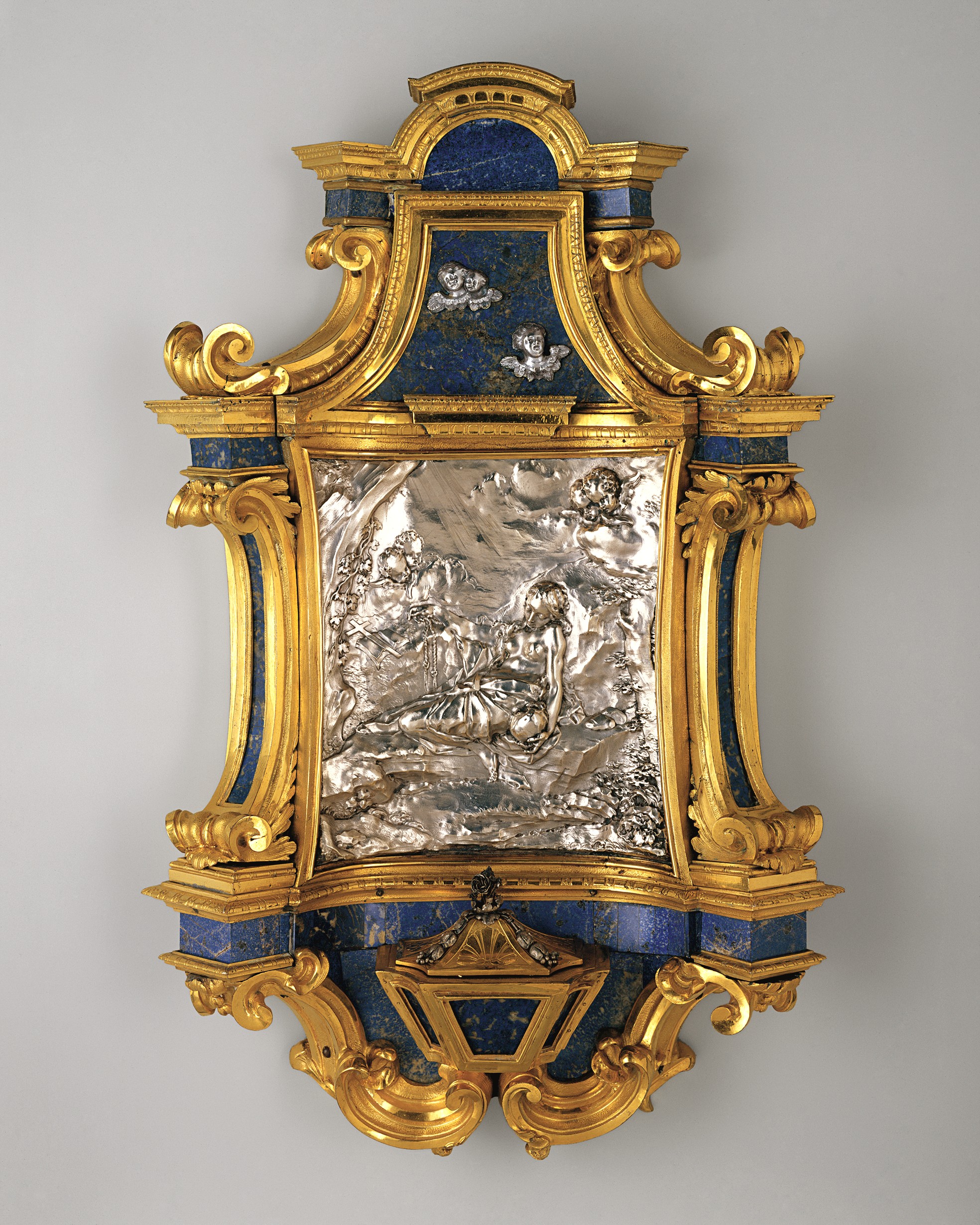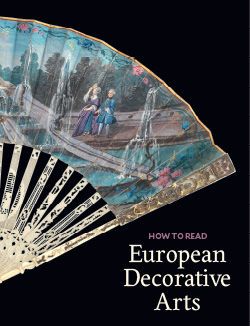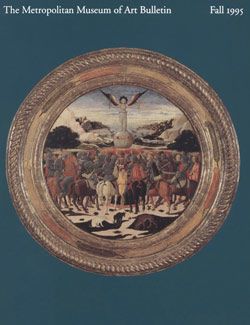Holy-water stoup with relief of Mary of Egypt
Giovanni Giardini Italian
Relief after a composition by Benedetto Luti Italian
The goldsmith and designer Giovanni Giardini made this object for Pope Clement XI (r. 1700–1712), who presented it to Giovanni Battista Borghese, King Philip V of Spain's ambassador to the Holy See. Later, it was part of the collection of the Princes of Thurn and Taxis in Sankt Emmeram Castle in Regensburg, Germany. Giardini's prized devotional objects were intended for private use or for small, intimate chapels. Their technical perfection is such that they outshine many fine works made in Rome during the same period. The combination of the light catching gilded metal and the lapis lazuli with its myriad flecks of sparkling golden pyrites has a mesmerizing effect. Lapis lazuli symbolizes the choir of saints in heaven, and the attention of the person using this stoup would be directed toward heaven, a treasury of everlasting joy. Set around the silver relief of Mary of Egypt in ecstacy, the lapis plaques also suggest that the saint is part of the company of heaven. A related object is preserved in the Schatzkammer, or Treasury, of the Residenz in Munich.
This image cannot be enlarged, viewed at full screen, or downloaded.
This artwork is meant to be viewed from right to left. Scroll left to view more.






